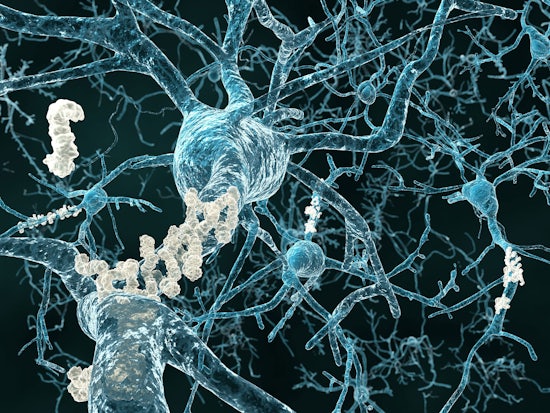Unravelling the mystery behind Alzheimer’s proteins
Although the exact cause of Alzheimer’s is still unclear, the build-up of amyloid and tau fibrils (fine protein fibres) in the brain, have been associated with the disease for some time, and now the results from two studies into these proteins could help with the diagnosis and treatment of the condition.

The way amyloid proteins bunch together in the brain could indicate the subtype of Alzheimer’s a person is living with (Source: Shutterstock)
A study published recently in Nature has found the way in which the amyloid proteins bunch together in the brain could indicate the subtype of Alzheimer’s a person is living with.
Researchers led by Robert Tycko of the National Institutes of Health in Bethesda, Maryland, and John Collinge of University College London examined brain tissue samples from individuals with three subtypes of the Alzheimer’s: typical Alzheimer’s, rapidly progressive Alzheimer’s, and posterior cortical atrophy Alzheimer’s.
They found while two types of Alzheimer’s displayed the same types of clumping, patients with rapidly progressive Alzheimer’s displayed a range of different fibril structures.
The researchers surmised these could be useful in developing new diagnostic tests for subtypes of Alzheimer’s.
However, while researchers say the different types of protein clumps could be used as a marker for the type of Alzheimer’s, they highlight there is no proof the amyloids actually cause Alzheimer’s disease.
In a separate study carried out by Washington University School of Medicine, researchers have shown in mice and monkeys levels of the tau protein can be reduced – and some of the neurological damage caused by tau even reversed – by a synthetic molecule that targets the genetic instructions for building tau before the protein is made.
The study published recently in Science Translational Medicine suggest that the molecule – known as an antisense oligonucleotide – potentially could treat neurodegenerative diseases characterised by abnormal tau, including Alzheimer’s.
“We’ve shown that this molecule lowers levels of the tau protein, preventing and, in some cases, reversing the neurological damage,” says Timothy Miller, MD, PhD, the David Clayson Professor of Neurology and the study’s senior author. “This compound is the first that has been shown to reverse tau-related damage to the brain that also has the potential to be used as a therapeutic in people.”
Tau tangles are associated not just with Alzheimer’s but with a range of lesser-known neurodegenerative diseases, such as progressive supranuclear palsy and corticobasal ganglionic degeneration. Tau levels also increase in the aftermath of traumatic brain injury, which can lead to dementia.
“Tau tangles correlate with cognitive decline in several diseases,” says Miller. “This is a promising new approach to lowering tau, but we have to test whether it is safe in people, and whether it actually lowers tau, as it is designed to do, before we get to the question of whether it has any effect on the disease. But everything we’ve seen so far says that this is worth investigating as a potential treatment for people.”











![The new Aged Care Act exposure draft is slated for release in December of 2023, but advocates hope to see it rolled out on January 1, 2024. [Source: Shutterstock]](https://agedcareguide-assets.imgix.net/news/articles/wp/agedcareact__0811.jpg?fm=pjpg&w=520&format=auto&q=65)












Comments